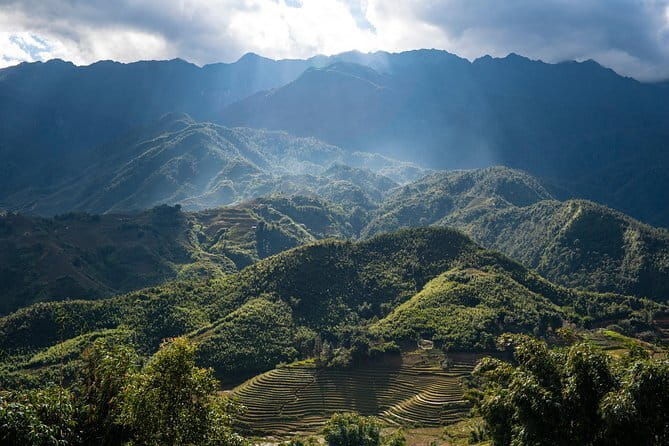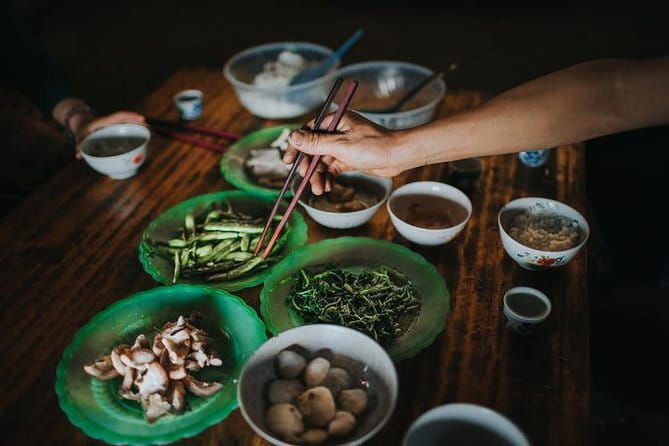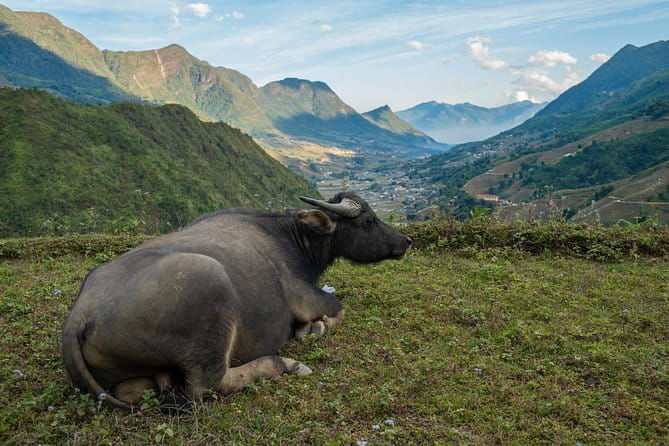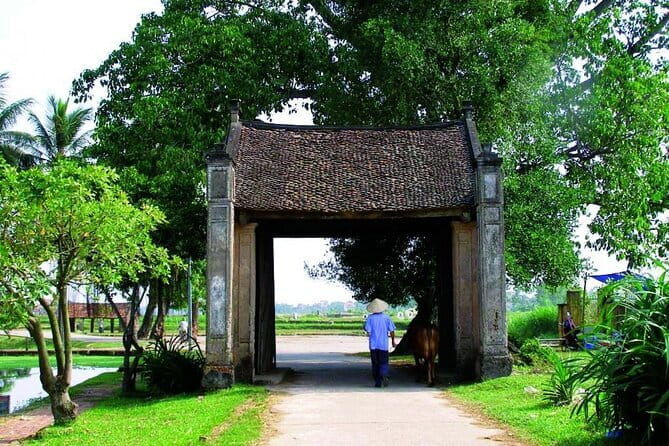Traveling to Vietnam’s stunning northern highlands? A trek through Sapa offers not just incredible scenery but a chance to connect deeply with local cultures. This 3-day, 2-night adventure, hosted by Sapa Tribal Trekking, promises an authentic and immersive experience, away from the usual tourist crowds.
What makes this tour stand out? Firstly, it’s led by expert English-speaking guides with a wealth of local knowledge—something you’ll appreciate when navigating the landscape and understanding tribal traditions. Secondly, the carefully curated route takes you through pristine rice terraces and traditional villages, providing a genuine glimpse into mountain life. Lastly, the chance to stay in homestays, with access to hot showers and WiFi, keeps comfort in mind without losing the rustic charm.
However, a consideration is the physically moderate level of fitness required—this trek covers about 12 km on the first day alone, which could be challenging for some. Also, since the tour is highly personalized, it’s best suited for travelers eager to experience local culture intimately rather than just ticking sights off a list.
If you’re after a meaningful, scenic journey that supports local communities and offers a real connection with Vietnam’s mountain tribes, this trek might just be the perfect fit.
Key Points

- Authentic Cultural Encounters: Stay with local families and learn about their way of life.
- Breathtaking Scenery: Trek through rice terraces, forests, and mountain villages.
- Expert Guides: Knowledgeable English-speaking guides enhance understanding and safety.
- Support for Local Communities: Your booking helps locals earn fair wages.
- Comfortable Homestays: Hot showers, WiFi, and local meals keep you connected and comfortable.
- Moderate Fitness Needed: The route is scenic but involves some demanding walking.
The Details: What to Expect from the Sapa Trekking Adventure
Love being outdoors? Check out these other hiking spots we've covered in Hanoi
How the Itinerary Unfolds
Day 1: Starting Your Journey in Sapa
Your adventure kicks off early in the morning at 9:00 am from Biên Phân, Sapa. Expect a pickup service that makes travel logistics straightforward, especially after a long bus ride from Hanoi. The first stop is Y Linh Ho, a small ethnic village where the vibrant traditional costumes of Hmong, Dzao, Tay, Zay, and Xa Pho tribes are a feast for the eyes. We loved the way guides describe the cultural significance behind the textiles and attire—these vivid costumes are a key part of local identity.
Then, the trek begins—around 3.5 hours covering roughly 12 km, strolling along lush rice terraces and following the Muong Hoa Stream. The landscape here is truly spectacular: terraced fields carved into the hillsides, with the Hoang Lien Son mountain range looming nearby. Reviewers rave about the scenery, with Beverly praising the “beautiful scenery” and her guide Giang for arranging everything from transportation to luggage storage.
In the late afternoon, the group arrives at Ta Van village, home to Dzay People. Here, you’ll check into a homestay, where you can get to know your host family and enjoy a sunset view that’s hard to beat. Sharing a meal with the family, often including local delicacies and rice wine, adds an unforgettable personal touch. Reviewers note the warmth of the hosts and the simple but delicious food.
Day 2: Deeper into Tribal Lands
The second day begins with an early breakfast prepared by your host, setting you up for another day of trekking. The route today is designed to showcase the diversity of the region. As you navigate through rice fields and bamboo forests, you’ll get panoramic views of Ta Van and Giang Ta Chai villages—home to Red Dzao People. The combination of lush greenery and mountain backdrops makes this stretch truly picture-perfect.
Lunch is often at a local home—another chance to connect with the community. Reviewers like Russell highlight how guides tailor the route to suit your pace, making the journey enjoyable and not overly strenuous. After lunch, the trek continues through peaceful terraces and quiet valleys, rarely crowded with other travelers—something many travelers find refreshing compared to popular spots.
In the afternoon, you arrive at Ban Ho village, inhabited by Tay People. Here, staying overnight in a homestay again offers a chance to learn about mountain life firsthand. Some guests participate in farming or cooking, which adds to the experience, as mentioned by reviewers who appreciated the opportunity to get involved and understand local daily routines.
Day 3: Winding Down with Local Insights
The final day starts with a sunrise over Ban Ho village, a peaceful moment that makes the early wake-up worthwhile. After breakfast, you’ll trek through Nam Toong village, home to both Tay and Red Dzao People. This part of the journey offers a closer look at the local way of life, with opportunities to meet residents and learn about their traditions.
Lunch wraps up the trek, either at a local restaurant or a family home, depending on your preference. Many travelers, like Beverly, mention how meaningful it is to sit down with locals and hear their stories. After lunch, you’ll return to Sapa town, completing your scenic and cultural journey.
How the Tour Supports Local Communities
Booking through Sapa Tribal Trekking isn’t just about the scenic views—it’s about giving back. The tour emphasizes fair wages for guides and hosts, many of whom come from regions where over 70% of the population live below the poverty line. This aspect resonates strongly with travelers looking to make a positive impact while exploring.
What’s Included and What to Consider
The price of $180 per person covers all meals (two breakfasts, three lunches, two dinners), homestay accommodation, and guided trekking. WiFi and hot showers are available during the homestays, adding a touch of comfort to the rural experience. The tour is private, ensuring personalized attention, and pickups are offered from Hanoi, which simplifies logistics.
Not included are travel insurance and personal expenses. It’s wise to have comprehensive insurance, especially when engaging in physically active travel.
Physical Fitness and Packing Tips
While the trek is moderate, the 12 km day can be demanding, especially for those unaccustomed to hiking. Good walking shoes, layered clothing, and a water bottle are must-haves. Reviewers mention the importance of a moderate fitness level, with some saying the walks are manageable but require stamina.
Love the evening vibe? Here are more after-sunset activities we've covered in Hanoi
- Weekend Hanoi Night Market & Street Food Tour
- Private Evening Cyclo Tour With Water Puppet Show
- Hanoi: Sunset Highlights Tour With Ao Dai Costume
- Hanois Night Life Exploring and Relaxing Massage Body
- Hanois Night Photoshoot With A Local Photographer
- Discover Hanois Street Food by Night & Mini Class Coffee
The Authentic Experience and Why It Matters

What truly sets this tour apart is the genuine connection it fosters. Staying in homestays, chatting with local families, and participating in everyday activities provide insights that no museum or city tour can match. Several reviewers have emphasized how these moments of sharing meals and stories are the highlights—they feel like visiting friends rather than just travelers.
The guides, notably Giang and her family, are praised for their warmth, knowledge, and flexibility. This isn’t a cookie-cutter tour—it’s tailored to your pace and interests, making it feel special and personal.
Many guests also highlight the scenic beauty as the main draw. From the rolling rice terraces to mountain vistas, the landscape remains vivid long after the trip ends. Beverly’s comment about the trek being “an amazing experience I wished never ended” captures this sentiment well.
Who Is This Trek Best For?

This tour suits travelers craving an authentic cultural experience combined with scenic beauty. It’s perfect if you appreciate rural life, local storytelling, and don’t mind some physical activity. It’s also well-suited for those who want to support local communities in a meaningful way.
However, it’s less ideal for someone seeking luxury accommodations or a leisurely, sightseeing-focused trip—this experience leans more toward active exploration and culture.
The Sum Up

This 3-day, 2-night trek in Sapa offers more than just picture-perfect vistas—it’s a genuine journey into mountain life and tribal culture. The inclusion of homestays, local guides, and community support transforms it from a simple trek into an enriching experience that leaves lasting impressions.
Whether you’re a seasoned hiker or a curious traveler eager to explore Vietnam’s highlands authentically, this tour delivers a balanced mix of adventure, cultural insight, and comfort. It’s especially suited for those who value meaningful travel over superficial sightseeing.
For anyone wanting to understand the soul of northern Vietnam while enjoying stunning landscapes, this trek is both worthwhile and inspiring.
FAQ

How long is the trekking each day?
The first day involves about 3.5 hours of trekking covering roughly 12 km. The second day includes another full day of walking through rice terraces and villages, with the distance tailored to your pace. The third day is shorter but still engaging with local sights.
Are meals included?
Yes, the tour includes two breakfasts, three lunches, and two dinners—prepared by local families or at restaurants. Meals are authentic, featuring regional flavors.
Do I need a good fitness level?
A moderate fitness level is recommended, as there are some demanding sections, especially on Day 1. However, guides are flexible and routes can be adjusted.
What accommodation is provided?
Homestays in local houses or traditional mountain villages. Expect hot showers and WiFi at most homestays, providing a balance of rustic charm and comfort.
Can I participate in local activities?
Yes, some hosts invite guests to join in farming or cooking, enhancing the culture.
Is this tour suitable for solo travelers?
Absolutely. As a private tour with just your group, solo travelers will find it easy to join and enjoy personalized attention.
What is the booking process?
Bookings are usually made well in advance—about 65 days on average—and confirmation is received upon booking. The tour is based in Hanoi, with pickup offered.
Can I cancel if my plans change?
Yes, there’s free cancellation up to 24 hours before the tour start, allowing flexibility.
Is travel insurance necessary?
Yes, travelers should have comprehensive travel insurance for peace of mind during active travel.
What makes this tour different from others in Sapa?
Beyond the stunning scenery, this tour emphasizes authentic cultural interactions, stays in local homes, and supports community livelihoods—delivering a meaningful experience that goes beyond typical tourist routes.
More VIP Experiences in Hanoi
- 2D1N Bai Tu Long Bay on Luxury Wooden Junk
- From Hanoi: 3 Days Luxury Sapa Trek & Fansipan Peak with Dcar
- Luxury Halong Day Tour From Hanoi
- Best selling – Luxury Ninh Binh – Hoa Lu – Trang An – Mua Cave Day Tour
- VIP LUXURY Sapa 2D1N -TRANSFER BY LUX LIMOUSINE CAR (Stay at 5* hotel)
- 2 Days 1 Night Luxury Ninh Binh Private Tour from Hanoi
More Boat Tours & Cruises in Hanoi
- Halong Bay Full-Day Cruise with Kayaking from Hanoi
- Halong Bay 2 Days 1 Night Scarlet Pearl Cruise
- Peony Cruise 5* Halong Bay 3 days 2 nights with 2 ways transfer
- Boss Cruise 2-day Explore Halong Bay from Hanoi
- Full-Day Tour Hoa Lu, Tam Coc Boat Trip and Mua Cave
- Private tour Halong Bay 1 Day Cruise with Cave, Kayaking
More Tour Reviews in Hanoi
- Le Mat Snake Village Tour With Snake Tasting
- Hanoi Old Quarter Private Street Food Walking Tour
- Led By Women – Hanoi Foodie Motorbike Tours
- Hoa Lu Tam Coc 1 Day Group Tour (Biking- Boating-Cave Exploring)
- 11 Days Allure Of Vietnam From The North To The South
- Hanoi Motorbike Tour for Historical Culture and Fun Sightseeing
Still browsing? Here are more Hanoi experiences we've covered recently
- Le Mat Snake Village Tour With Snake Tasting
- Hanoi Old Quarter Private Street Food Walking Tour
- Led By Women – Hanoi Foodie Motorbike Tours
- Hoa Lu Tam Coc 1 Day Group Tour (Biking- Boating-Cave Exploring)
- 11 Days Allure Of Vietnam From The North To The South
- Hanoi Motorbike Tour for Historical Culture and Fun Sightseeing
- Halong Bay Full-Day Cruise with Kayaking from Hanoi
- Ninh Binh Full Day Small Group Bai Dinh Trang An Mua Cave Tour
- Hanoi Half-Day Private Tour: Must-see Attractions & Train Street
- Halong Bay 2 Days 1 Night Scarlet Pearl Cruise
- Full Day Phong Nha Cave Tour Departing from Hanoi
- Ancient Treasure Duong Lam and Van Phuc Private Tour
